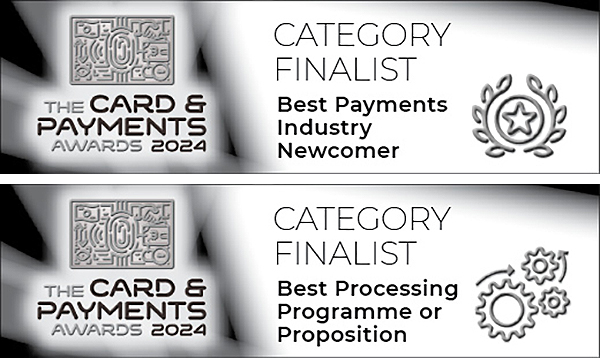Contactless Payments Reach New Heights: What the Latest Data Means for Businesses
Last October, the UK saw a significant change in the way customers pay for everyday items. The contactless card payment limit was increased from £45 to £100, a move designed to make payments faster, simpler, and more convenient for consumers. By allowing customers to complete more purchases with a simple tap, this change reflected the growing desire for frictionless, seamless payment experiences. Early reports suggest that consumers are embracing this increased limit, with data from UK Finance confirming a notable surge in contactless usage.
At ClearAccept, we understand the importance of staying ahead in the rapidly evolving payments landscape. Not only do these changes impact how customers pay, but they also have significant implications for businesses striving to improve the overall customer experience.
Key Trends in Contactless Payments
The increase in the contactless limit has highlighted several key trends in consumer behaviour and payment patterns.
1. Contactless is now the dominant card payment method
Contactless payments are no longer just a convenient option—they are now the most common way people pay with cards. In December 2021, contactless transactions hit record levels, with 69% of all debit card payments and 56% of credit card payments being made via tap-and-pay. This clearly demonstrates a shift in consumer preferences, as more people opt for speed, convenience, and a touch-free payment process.
2. Average transaction values have risen
With the limit increase, the average spend per contactless transaction has naturally grown. Between October 2021, when the new limit was introduced, and December 2021, average contactless transaction values increased by 30%. Customers are now using contactless payments for higher-value items, reflecting growing confidence in both the technology and the security measures surrounding it.
3. Contactless continues to grow year on year
Contactless usage is not just a short-term spike—it is a trend that continues to accelerate. In 2021 alone, 13.1 billion contactless payments were made in the UK. This represents a 36% increase on 2020 and an impressive 52% rise compared with 2019. These figures underline that contactless payments are no longer a novelty; they are becoming the default method for face-to-face transactions across the country.
4. The value of contactless transactions is climbing steadily
Alongside growing usage, the total monetary value of contactless payments is also increasing rapidly. In 2021, the UK saw £165.9 billion spent via contactless transactions. That is 46% higher than 2020 and more than double the amount spent in 2019, highlighting the enormous economic significance of this payment method.
Taken together, these trends indicate that contactless payments are not only growing in popularity but are also becoming the most valuable form of card payment for both consumers and businesses.
Why This Matters for Businesses
For businesses, these changes are more than just statistics—they represent a major shift in customer expectations. Today’s consumers value speed, convenience, and simplicity in every interaction, and payments are no exception. By embracing contactless payments, businesses can offer a smoother, faster, and safer payment process, directly enhancing the customer experience.
This is particularly important in sectors such as hospitality, retail, and service industries, where seamless transactions can make a real difference to customer satisfaction. Delays at the till, awkward handling of cash, or complicated card processes can all detract from the overall experience, whereas contactless payments allow customers to pay with minimal friction, whether at a table, counter, or even remotely.
How ClearAccept Supports Contactless Payments
At ClearAccept, we are committed to providing businesses with the tools they need to keep pace with modern payment trends. All our card machines are fully equipped to accept contactless payments quickly and securely. This means your customers can enjoy fast, convenient transactions wherever they are—whether that’s at the till, at their table, across your site, or even out in the field.
Our range of card machines is designed to support a variety of business environments and needs. From high-traffic retail outlets to mobile service providers, ClearAccept machines ensure that every payment is processed efficiently, securely, and without disruption. By integrating contactless capabilities into your payment systems, you not only meet customer expectations but also future-proof your operations against the continued growth of tap-and-pay technology.
The Future of Contactless Payments
The surge in contactless payments is part of a wider digital payments revolution. Consumers now expect flexibility, security, and convenience in all payment interactions. The increase of the limit to £100 is just one step toward a cashless, digital-first economy where speed and simplicity are paramount.
For businesses, this evolution represents an opportunity to enhance customer satisfaction, improve transaction efficiency, and gain a competitive edge. By adopting ClearAccept’s contactless-enabled card machines and solutions, companies can ensure that their payment infrastructure keeps pace with customer expectations while maintaining the highest standards of security.
Delivering Better Customer Experiences
At the heart of all ClearAccept solutions is a focus on improving the customer experience. Every fast, seamless, and secure payment builds trust, encourages repeat business, and contributes to a positive perception of your brand. With contactless payments continuing to grow in both popularity and value, businesses that adapt quickly are best placed to meet the needs of today’s consumers.
Whether it’s a busy café, a retail store, or an outdoor service location, ClearAccept provides the technology to ensure every customer can pay quickly and securely, without unnecessary delays or complications.
Explore ClearAccept Contactless Solutions
The rise of contactless payments is more than a trend—it’s a fundamental shift in how people interact with money. ClearAccept’s range of card machines enables you to accept contactless payments wherever your customers are, making transactions simpler, faster, and safer.





